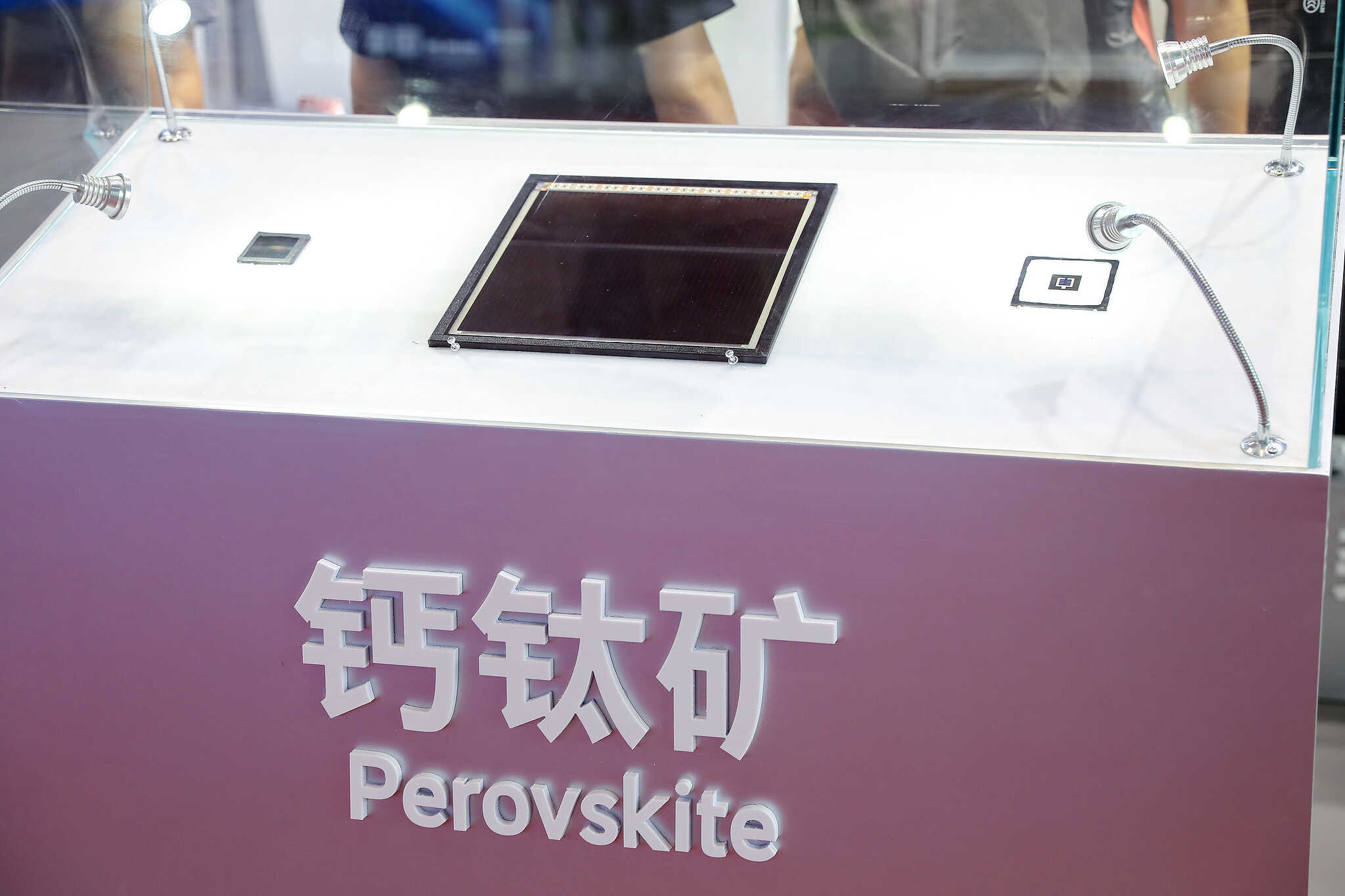
Researchers at the Changchun Institute of Applied Chemistry, Chinese Academy of Sciences, have successfully developed a novel radical self-assembled molecular material.
This innovation overcomes both the inadequate performance and the difficulty of uniformly fabricating large-area hole-transport layers in perovskite solar cells. The technology has been efficiency-certified by the U.S. National Renewable Energy Laboratory.
This result was published in the journal Science on June 27, 2025.

Perovskite, the 18th SNEC International Photovoltaic Power Generation and Smart Energy Exhibition & Conference, Shanghai, China, June 13, 2025. /VCG
Perovskite solar cells have attracted intense interest for their low cost, high efficiency and easy processing, with applications ranging from large-scale photovoltaics (PV) installations to vehicle-integrated, building-integrated PV.
However, the widely used organic self-assembled molecules in the hole-transport layer have long hit a performance bottleneck, leading to lower device efficiency and challenges in mass manufacturing.
To tackle this, teams led by Qin Chuanjiang, Wang Lixiang and other researchers spent three years independently creating a "double-radical self-assembled molecule" and integrating it into perovskite devices.
According to tests by researcher Zhou Min's team, the new material more than doubles carrier-transport rates under simulated operating conditions.
Devices built with it also show virtually no performance degradation after continuous operation for thousands of hours.
Over the past decade, perovskite compounds have become the material of choice for many companies developing next-generation solar cells.
Qin says the team's next step is to push for industrial-scale applications of the new material and to continue advancing the technology. (CGTN)

86-10-68597521 (day)
86-10-68597289 (night)

52 Sanlihe Rd., Xicheng District,
Beijing, China (100864)

